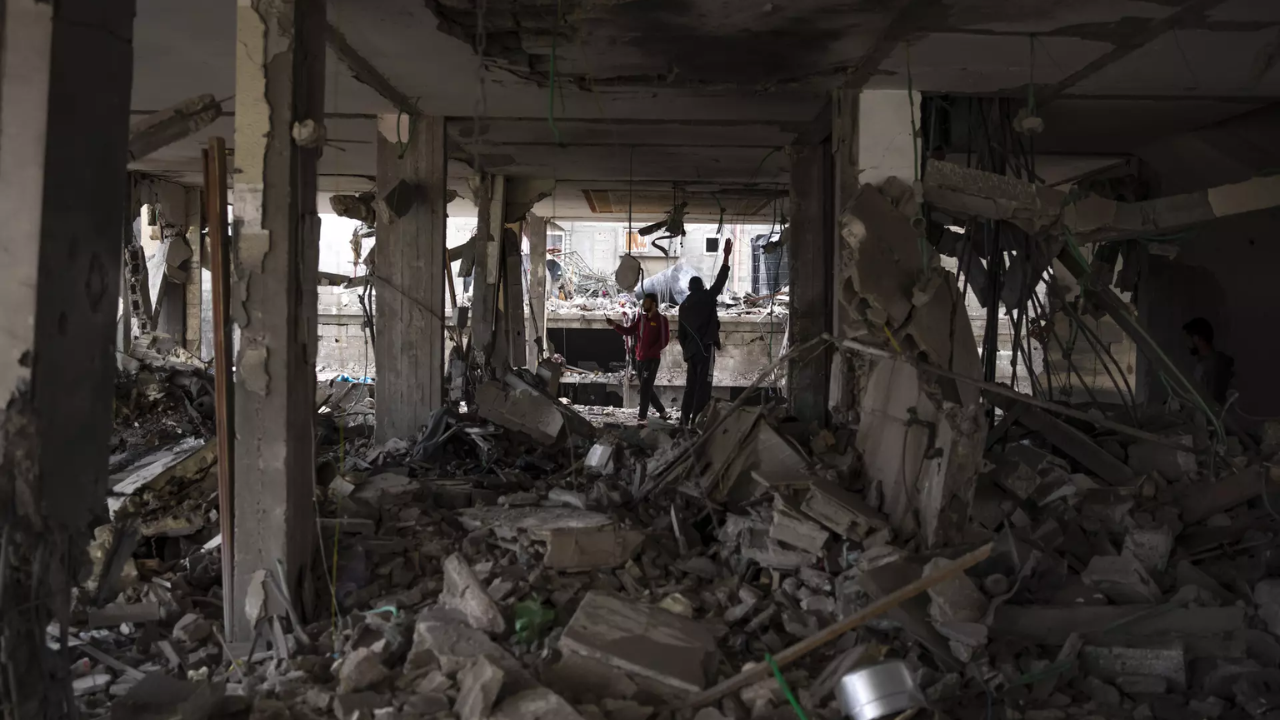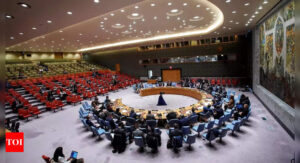

RAFAH: Israeli airstrikes have caused significant casualties in the city of Rafah, resulting in the deaths of at least 28 Palestinians. The airstrikes were conducted early Saturday, following an announcement by Israeli Prime Minister Benjamin Netanyahu regarding the evacuation of hundreds of thousands of people from Rafah. This announcement caused panic among the residents, as more than half of Gaza’s population is concentrated in Rafah.Many of them have been repeatedly uprooted due to Israeli evacuation orders. The situation is dire, as there are limited options for the displaced civilians to seek safety.
The tension between Netanyahu and the Biden administration has been escalating over the past week. US officials have expressed concerns that an invasion of Rafah without proper plans for the civilian population would lead to a humanitarian disaster.
Rafah has been a frequent target of Israeli airstrikes, even after civilians were instructed to seek shelter there. In the recent attacks, three airstrikes on residential homes led to the deaths of 28 people, including 10 children. In the neighboring city of Khan Younis, Israeli forces targeted Nasser Hospital, resulting in casualties and hindering the movement of medical staff.
The rising death toll of Palestinians, which now stands at almost 28,000 after four months of war, has strained the relationship between Israel and the US. While Israel blames Hamas for using civilian areas as bases for attacks, US officials are calling for more precise strikes.
Netanyahu’s office stated that Rafah, located at the border with Egypt, is the last stronghold of Hamas in Gaza. The Israeli government believes that eliminating Hamas requires intense military action in Rafah, along with a mass evacuation of civilians. However, the displacement of civilians poses a significant challenge, as the Israeli offensive has caused widespread destruction throughout Gaza.
Furthermore, Egypt has expressed concerns about a potential influx of Palestinians crossing the border, as it could jeopardize the long-standing peace treaty between Egypt and Israel. The border crossing between Gaza and Egypt, which is mostly closed, serves as a crucial entry point for humanitarian aid.
The population of Rafah has significantly increased due to the displacement of people from other parts of Gaza. The city, which had a prewar population of approximately 280,000, is now accommodating an additional 1.4 million people who have sought refuge with relatives, in shelters, or in tent camps.
The tension between Netanyahu and the Biden administration has been escalating over the past week. US officials have expressed concerns that an invasion of Rafah without proper plans for the civilian population would lead to a humanitarian disaster.
Rafah has been a frequent target of Israeli airstrikes, even after civilians were instructed to seek shelter there. In the recent attacks, three airstrikes on residential homes led to the deaths of 28 people, including 10 children. In the neighboring city of Khan Younis, Israeli forces targeted Nasser Hospital, resulting in casualties and hindering the movement of medical staff.
The rising death toll of Palestinians, which now stands at almost 28,000 after four months of war, has strained the relationship between Israel and the US. While Israel blames Hamas for using civilian areas as bases for attacks, US officials are calling for more precise strikes.
Netanyahu’s office stated that Rafah, located at the border with Egypt, is the last stronghold of Hamas in Gaza. The Israeli government believes that eliminating Hamas requires intense military action in Rafah, along with a mass evacuation of civilians. However, the displacement of civilians poses a significant challenge, as the Israeli offensive has caused widespread destruction throughout Gaza.
Furthermore, Egypt has expressed concerns about a potential influx of Palestinians crossing the border, as it could jeopardize the long-standing peace treaty between Egypt and Israel. The border crossing between Gaza and Egypt, which is mostly closed, serves as a crucial entry point for humanitarian aid.
The population of Rafah has significantly increased due to the displacement of people from other parts of Gaza. The city, which had a prewar population of approximately 280,000, is now accommodating an additional 1.4 million people who have sought refuge with relatives, in shelters, or in tent camps.






